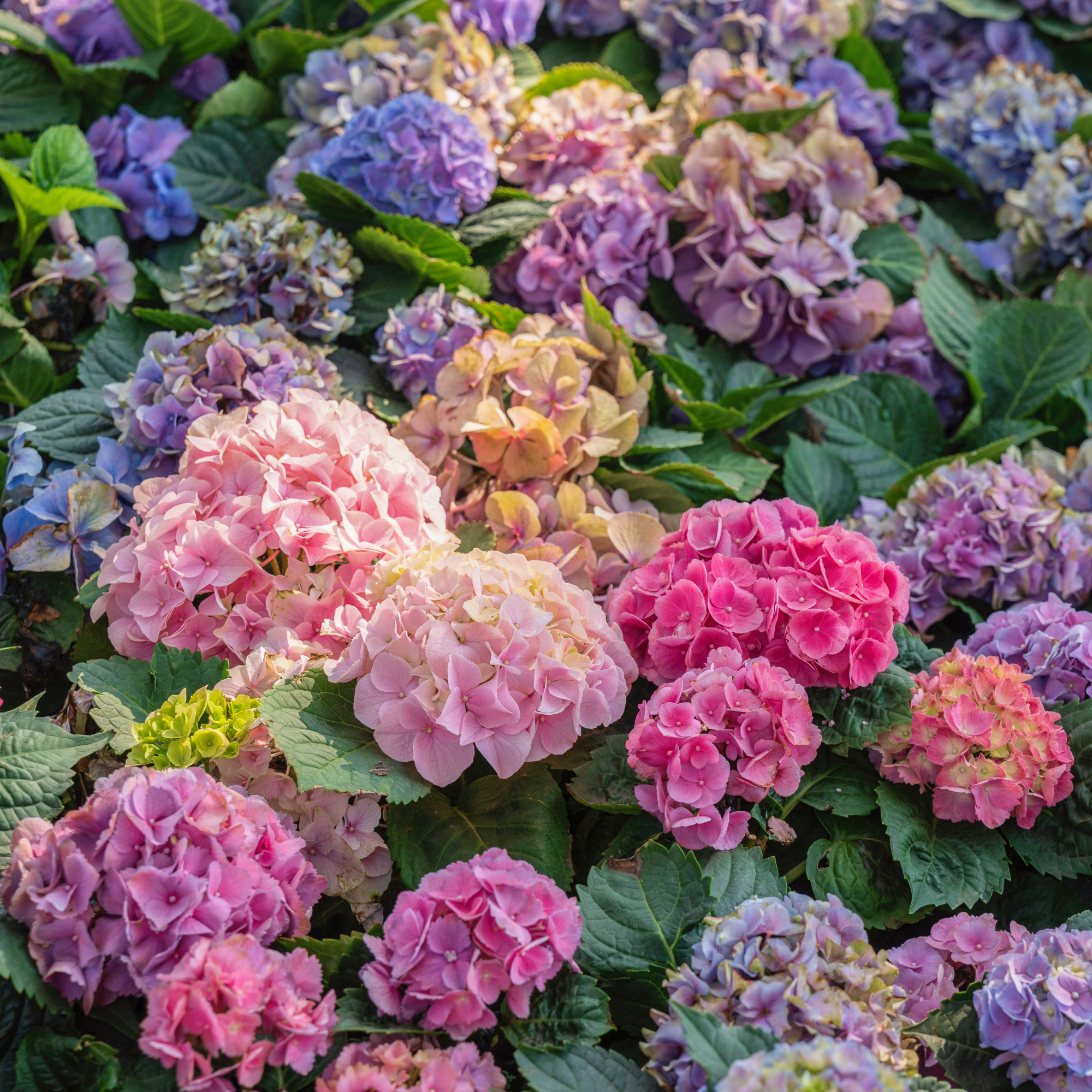How To Grow Panicle Hydrangeas For Gorgeous, Low-Maintenance Blooms All Summer Long – Plus, Top Cultivars To Try
Panicle hydrangeas are the ultimate low-maintenance shrubs! These beauties bloom all summer and all it takes is a little care. Here's how to help them thrive.
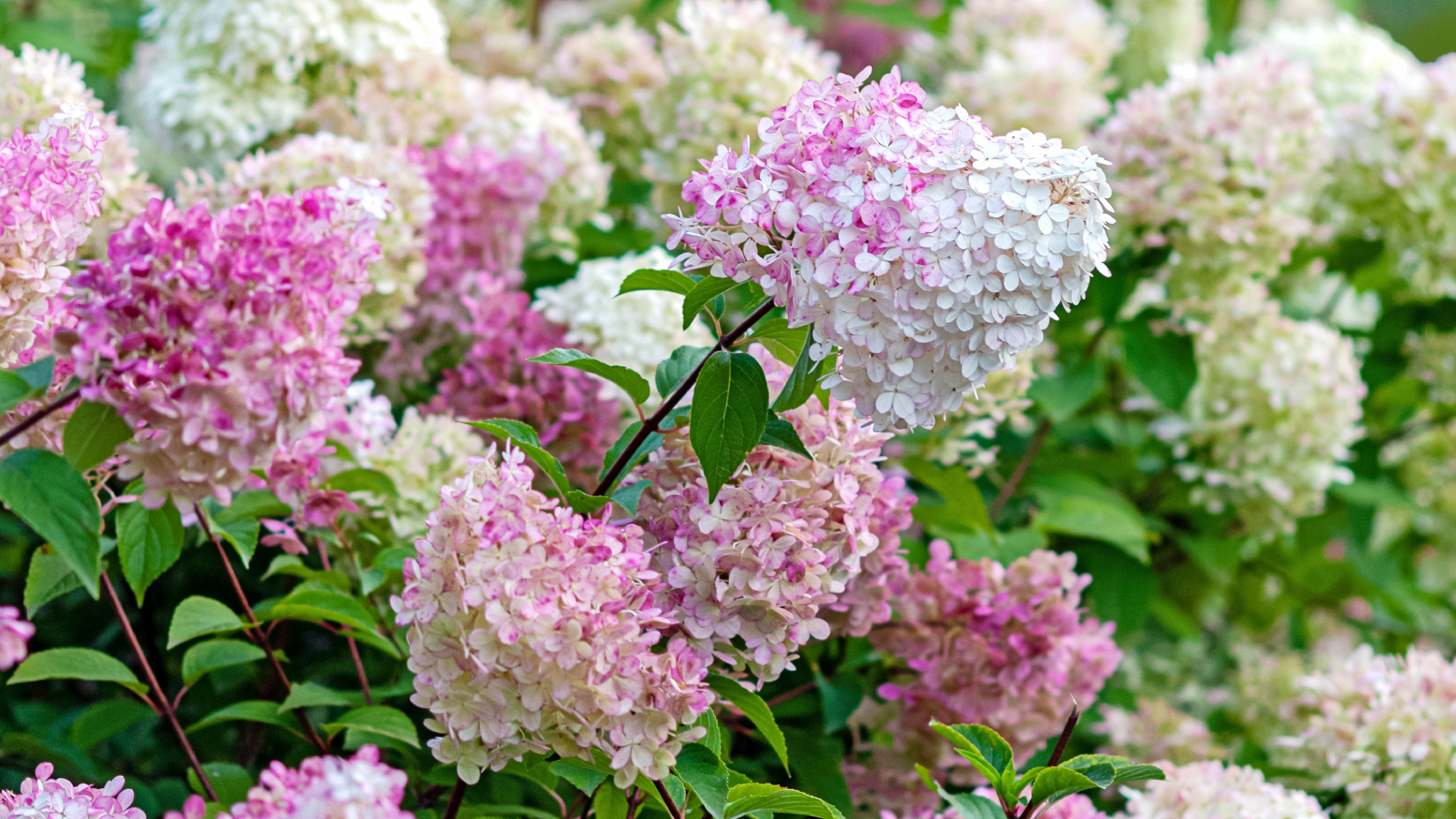

Quick Facts:
Botanical name: Hydrangea paniculata
Height: 3-25 ft (1-7.6 m)
Spread: 3-8 ft (1-2.4 m)
Sun exposure: Full sun, part sun
Soil requirements: Well-draining
Hardiness zones: 3-9
When to plant: Spring, fall
Bloom time: Summer
Panicle hydrangeas (Hydrangea paniculata) are a stunning addition to almost any landscape. Their large blooms and dependability make them an ideal choice for both flower gardens and front yards, and have sealed them as one of the most popular hydrangea varieties.
With so many varying needs for different types of hydrangeas, however, it’s important to learn the specific growing requirements of panicle varieties to help shrubs succeed.
In this guide, we’ll explore the care needs of Hydrangea paniculata in greater detail, with a special focus on their cultural requirements, planting, and our experts’ favorite cultivars to try.
What Does a Panicle Hydrangea Look Like?
Panicle hydrangeas come in many shapes, sizes, and colors. If you’ve ever seen a tree hydrangea, that was probably a panicle. This type of hydrangea ranges from dwarf cultivars that only reach about 3 feet (1 m) high to large types that can grow up to 25 feet (7.6 m) tall.
Most panicle hydrangeas have white flowers. Many fade from white to pink as the season progresses. But other cultivars, like the well-known ‘Limelight’ hydrangea shrubs, start out with green flowers that then fade to white.
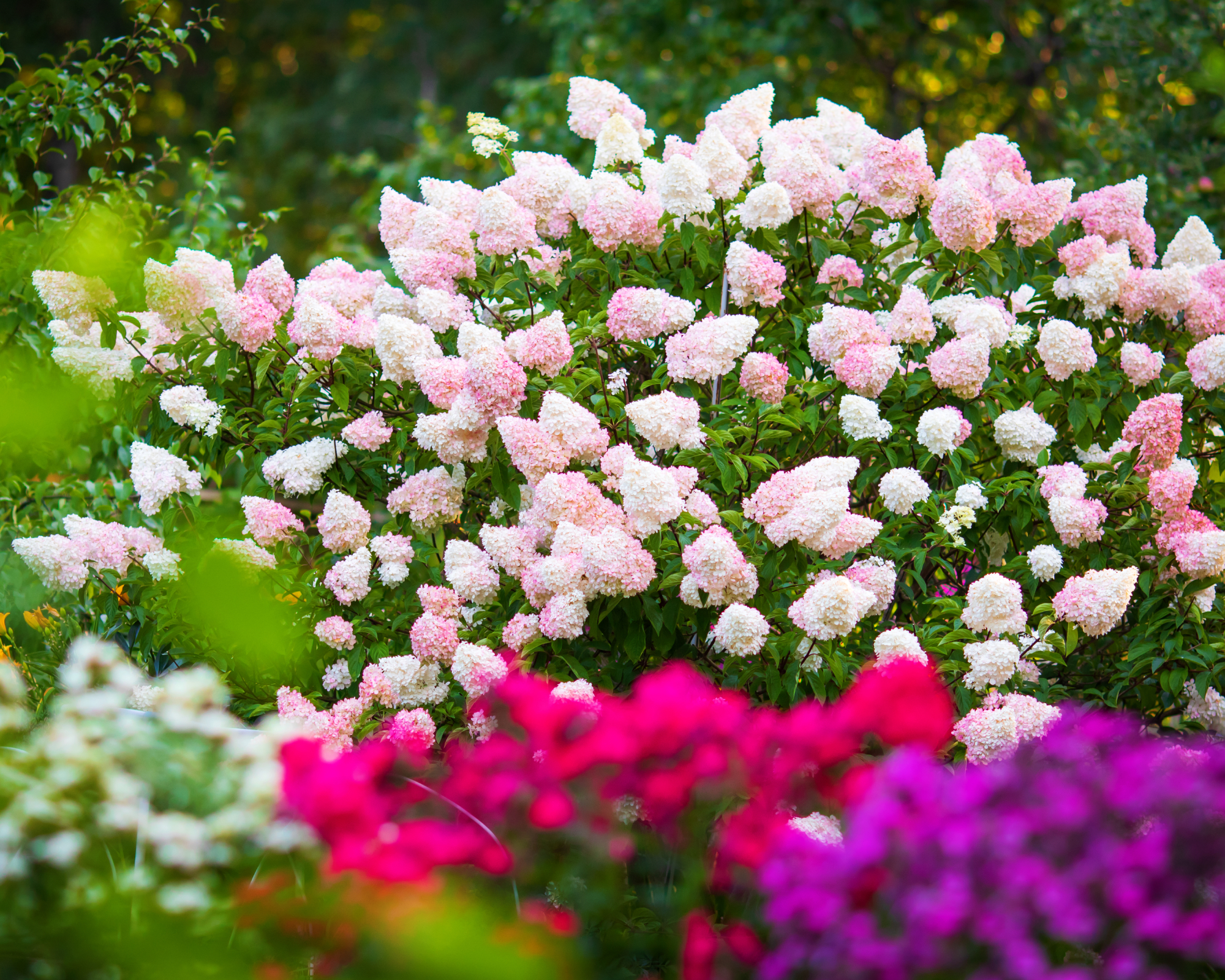
Panicle Hydrangea Care
Panicles are some of the easiest to grow of all the hydrangea varieties. There’s also a huge array of different cultivars that are suited to a large range of different landscapes. Let’s take a look at the basics of Hydrangea paniculata planting, care, as well as some of the most beautiful cultivars you can grow.
Light
Panicles are some of the most sun-loving types of hydrangeas and they can typically tolerate full sun locations, except in extremely hot climates.
Sign up for the Gardening Know How newsletter today and receive a free copy of our e-book "How to Grow Delicious Tomatoes".
When grown in warmer climates, H. paniculata benefit from brief periods of shade during the hottest parts of the afternoon. This is especially true in USDA zones 7-9, where too much sun may cause shrubs to become heat stressed and wilt.
In cooler regions, panicle hydrangea shrubs thrive where they receive full sun throughout the whole day.
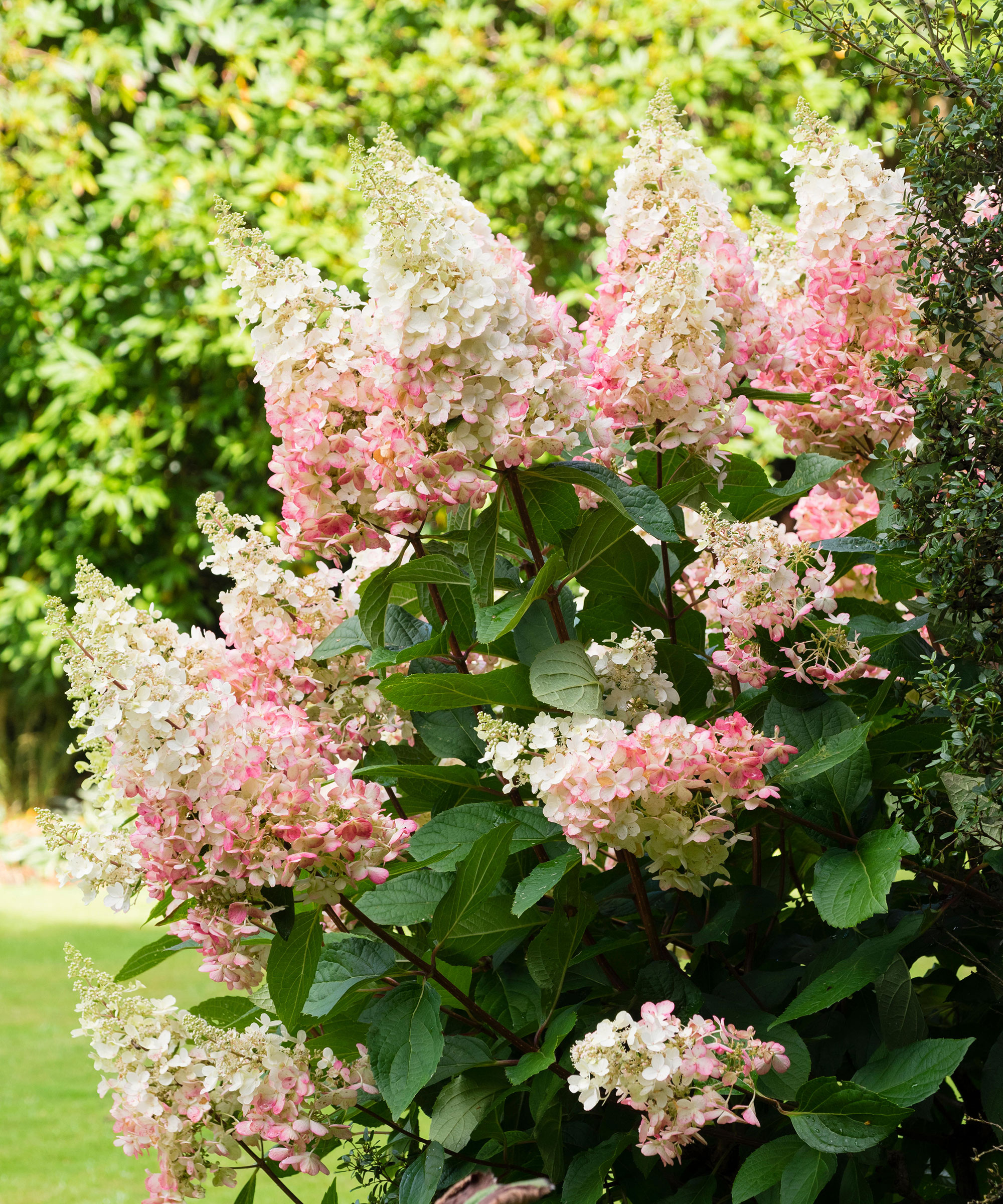
Temperature & Humidity
Panicle hydrangeas grow best where temperatures remain relatively warm throughout summer. Prolonged periods of heat above 90 F (32 C) can be detrimental to plants. High temperatures can cause brief wilting of flowers and foliage. Water well during hot, dry periods to prevent wilting and heat stress.
Most panicle hydrangea cultivars tolerate humidity well, though fungal disease can be a cause for concern where air circulation is poor. Space shrubs appropriately to avoid overcrowding and allow for good air movement.
Water
Watering hydrangeas is key to keeping them healthy and happy. Routine watering is best achieved through drip irrigation or soaking. Saturate the soil at the root zone and avoid wetting foliage to prevent problems with disease.
Though established shrubs are typically able to withstand brief periods of drought without any issues, take care to water new plantings at least once a week. Do not allow them to dry out completely between waterings.

Fertilizer
Panicle hydrangeas benefit from the use of compost, composted manure, or an organic slow-release fertilizer each spring. For more flowers, you can continue fertilizing hydrangeas with a bloom booster throughout summer until the plant begins to bud. Use a liquid or fast-acting formula for the most immediate results.
This is generally unnecessary, though. One application of an organic fertilizer, like compost, at the beginning of each season will not only give your shrub the nutrients it needs, but improve the soil around your shrub as well.
Soil
Those planting panicle hydrangeas for the first time are often happy to find out these shrubs are able to tolerate a wide range of soil conditions. This includes those which are neutral, as well as slightly alkaline or acidic soils. Unlike some other varieties, pH does not affect the overall performance of the plant or change hydrangea flower color.
Soil fertility, however, is of great importance. Use a finished homemade compost or composted manure at planting to improve drainage and ensure your panicle hydrangea has the nutrients it needs for a strong start.
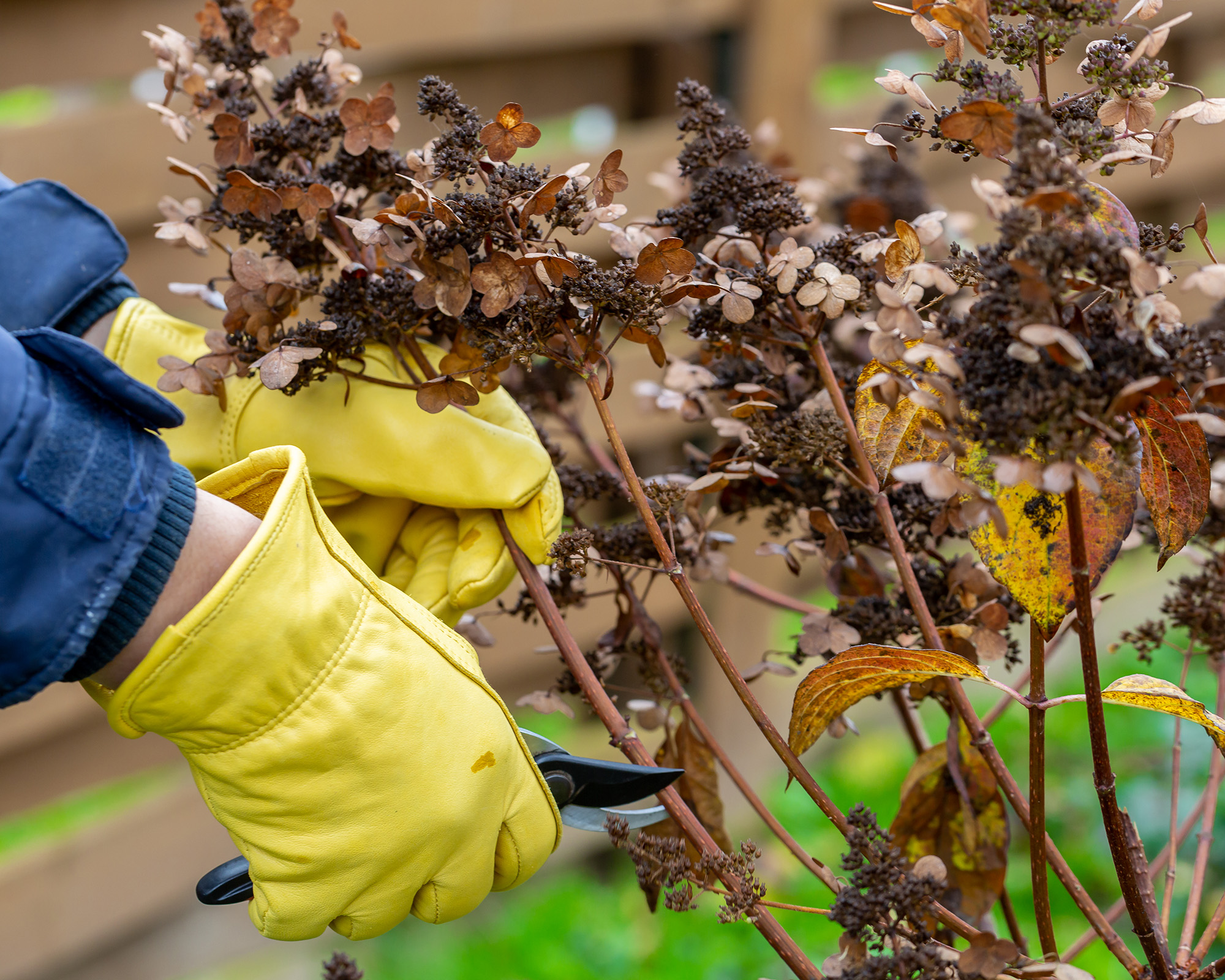
Pruning
Learning how and when to prune hydrangeas is an essential aspect of proper plant care. Pruning and deadheading hydrangeas keeps them looking their best and ensures good blooming.
You can leave spent flowers on the shrub over winter to provide visual interest during the off-season, then prune them out in spring. Since most panicle types bloom on new wood, pruning in early spring before growth begins again is the ideal time.
You can trim shrubs to maintain the desired size and shape or to rejuvenate plants. But instead of trying to control the size of your hydrangea through pruning, it’s best to choose a variety that fits well in your space. Always consider the mature size and spread before planting any shrub.
Problems, Pests & Diseases
Where conditions are ideal, there aren't many common hydrangea diseases. Poor drainage or not enough air circulation are among the most contributors of disease. Both can lead to the development of fungal infections like leaf spot, blight, or powdery mildew. But other than those issues, which you can prevent with proper planting, there aren't many problems that plague panicles.
Smaller insects, such as aphids and spider mites, may also frequent shrubs. However, most infestations are typically minor and only rarely do they affect the overall health or appearance of panicle hydrangeas.
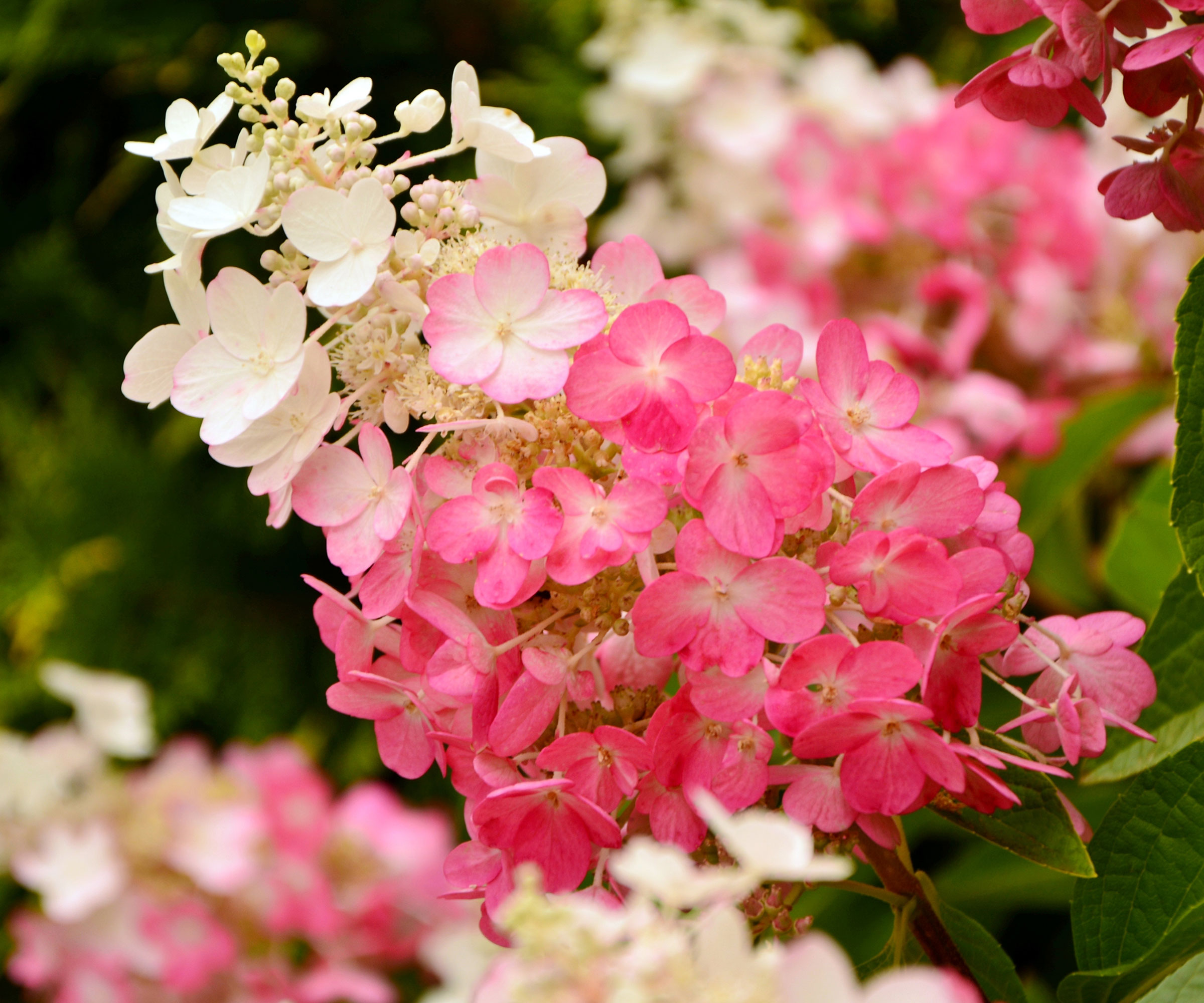
Propagation
The best way to propagate hydrangeas is via cutting. Clip small stem segments from plants in summer. Remove the lower foliage, leaving only two or three leaves at the top of the cutting. Use rooting hormone to speed up growth and increase your chances of success. Plant cuttings into growing medium, cover with a plastic baggie, and place somewhere warm out of direct sunlight.
Though it is possible to sprout panicle hydrangea seeds, the process is likely to yield inconsistent results. Seed from hybrids may not be viable, may germinate poorly, or may produce plants that are unlike their parents so propagating by cuttings is the most reliable method.
Where to Plant Panicle Hydrangeas
There are many brilliant ways to use hydrangeas in the landscape. But when planting any shrub, it's important to carefully consider the site first. Think about what your shrub will need to thrive in its new location.
Panicle hydrangeas grow best in well-draining beds that receive ample light. Size at maturity should also be a determining factor in regards to their use in the landscape.
Large varieties are well-suited to the creation of seasonal privacy hedges and screens. Smaller types look lovely in mixed borders or as perennial foundation plantings. Compact varieties are also good for pots and containers and can add effortless flair to porches and patios.
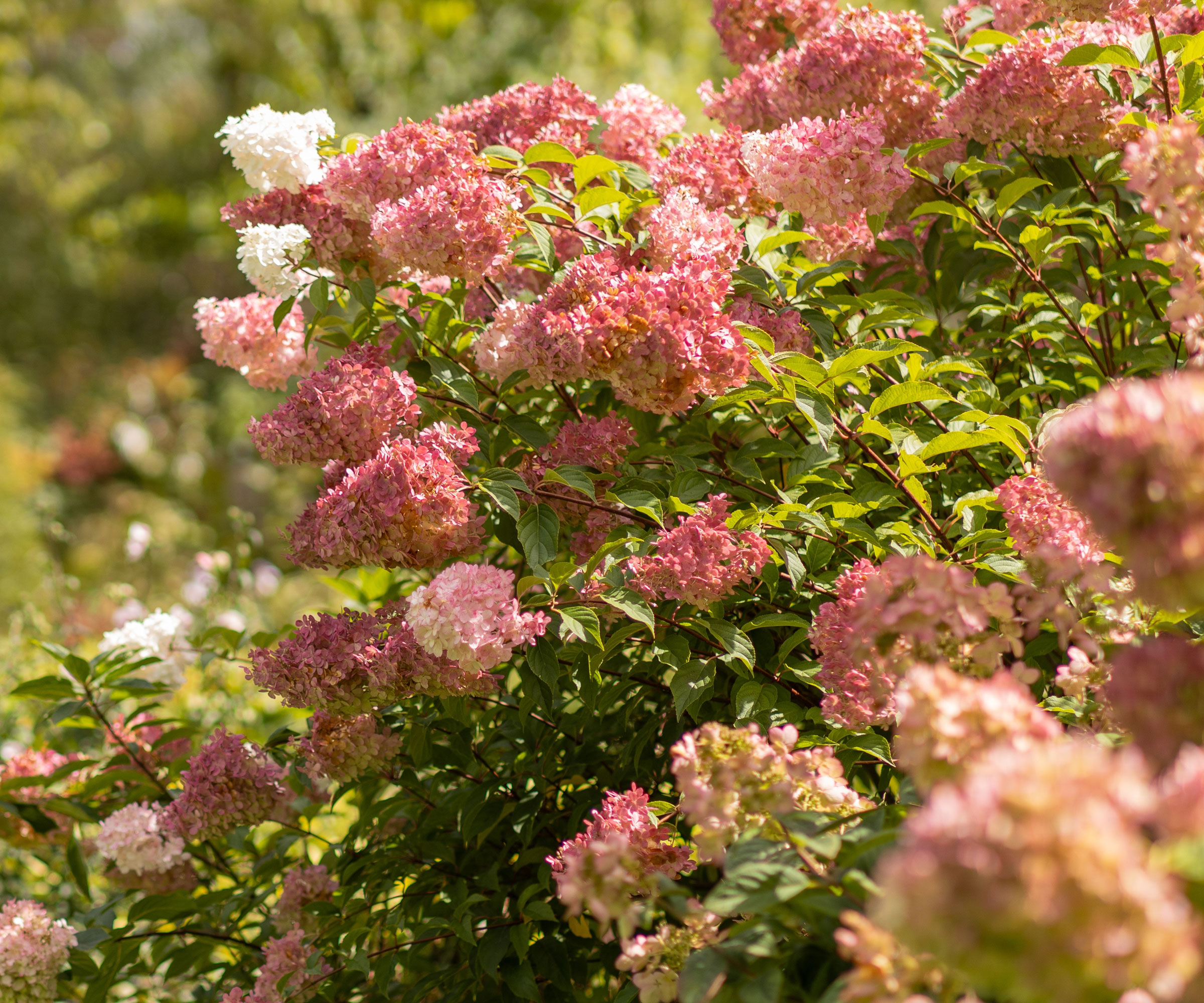
How to Plant Panicle Hydrangeas
Panicle hydrangea shrubs are available at most garden centers from spring through fall. Spring and fall are the best times to plant hydrangeas. Planting hydrangeas in fall, or late summer in cooler climates, after the heat of summer has passed allows ample time for root development before the onset of cold winter temperatures.
Once you select a site, it’s time to prepare the soil. Dig a hole approximately the same depth and twice the width of the plant’s root ball. Move your new shrub gently into the hole and carefully backfill with soil.
Water newly planted panicle hydrangeas well and keep them consistently moist throughout their first growing season. This will help to ensure a strong start and promote healthy new growth.
Panicle Hydrangea Varieties
There are dozens of pretty panicle hydrangea varieties to choose from, so selecting the right one for your landscape can be overwhelming. Most are hardy and easy to grow, so the biggest challenge is often choosing which one you think is prettiest.
Here are a few of the most popular panicle hydrangea cultivars. These shrubs are not only easy-care but easy to find at many nurseries.
- ‘Grandiflora’ also known as the ‘PeeGee’ hydrangea is the classic panicle hydrangea. This cultivar has huge white blooms that fade to pink and it can grow to the size of a small tree.
- ‘Limelight’ starts the season with stunning lime green blooms that turn to white then subtly fade to pink. This electrifying cultivar puts out tons of flowers all season long and looks beautiful from spring through fall. That’s why it’s one of our gardening experts’ favorite kinds of hydrangeas. Get your Limelight hydrangea now in the Gardening Know How Shop.

- ‘Pinky Winky’ hydrangeas produce dreamy white and pink blooms that add instant romance and whimsy to any garden. This gorgeous cultivar looks right at home in both formal and more informal plantings, like a cottage garden.
- ‘Quick Fire’ hydrangea is a robust shrub that can tolerate even challenging locations in the garden. This heat and drought-hardy shrub has delicate, lacy panicles of white flowers that turn to fiery magenta as summer goes on. If you love the look of Quick Fire, but don’t have the room for a full-sized shrub, ‘Little Quick Fire’ is a fantastic dwarf version that looks and grows just like the classic Quick Fire. Learn more about ‘Little Quick Fire’ hydrangeas now in the Gardening Know How Shop.
- ‘Bobo’ hydrangeas are the perfect panicles for small gardens! These little beauties look great in pots on a porch or balcony or planted in a compact yard. This award-winning cultivar produces clouds of white flowers all summer long.
Frequently Asked Questions
How Fast do Panicle Hydrangeas Grow?
Panicle hydrangea plants are known for their rapid growth. New shrubs establish themselves quickly. Gardeners can expect healthy plants to grow as much as 24 inches (61 cm) per season, depending on the cultivar.
Can You Root Panicle Hydrangeas in Water?
Though it is technically possible to root hydrangeas in water, rates of success are generally poor. In most instances stem cuttings grown in water will begin to rot, mold, or show signs of disease before rooting has taken place. Instead, use a quality rooting medium like a potting mix, perlite, or vermiculite.
This article features products available from third party vendors on the Gardening Know How Shop. Keep in mind that our plant inventory is limited—so if you’re thinking of purchasing, don’t wait!

Tonya Barnett has been gardening for 13 years. Flowers are her passion. She has transformed her backyard into a cut flower garden, which she regularly chronicles on her YouTube channel http://www.youtube.com/@tonyawiththeflowers.
- Laura WaltersContent Editor
- Amy DraissDigital Community Manager
